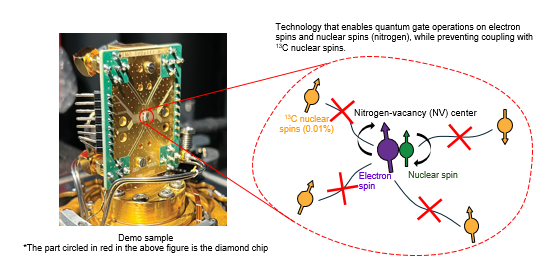Fujitsu and QuTech have achieved an error rate of less than 0.1 percent in a complete set of quantum gates based on diamond spin qubits, surpassing the threshold for quantum error correction.
For the first time, Fujitsu and QuTech have achieved an error rate of less than 0.1 percent in a complete set of universal quantum gates based on diamond spin qubits. This surpasses the threshold for quantum error correction, marking a significant step towards fault-tolerant quantum computers.
Fidelity Above 99.9 Percent
The researchers at QuTech, a quantum technology research institute at TU Delft, used diamond crystals with an extremely low concentration of carbon-13 isotopes. This approach minimized environmental noise and improved the stability of the qubits. The qubits are built around so-called NV centers in diamond, where the spin of an electron and a nitrogen nucleus are used as qubits.

To measure performance, the team applied a method called gate set tomography. This technique allows for a very detailed mapping of the error parameters of gates. By combining pure materials, precise pulse technology, and measurement methods, a fidelity of more than 99.9 percent was achieved in both single and two-qubit operations. This result exceeds the error correction threshold needed to build scalable quantum computers.
Towards Scalable Systems
According to the researchers, the diamond spin qubits used offer several advantages. They are less sensitive to noise, can operate at relatively high temperatures, and enable optical connections via photons. This opens up perspectives for scalable systems and networks of quantum computers.
read also
D-Wave Tests Quantum Blockchain with Four Quantum Computers
Fujitsu and QuTech plan further collaboration to expand the number of qubits and develop optical couplings and control circuits. In the long term, the parties aim to build a prototype of a diamond spin quantum computer. They are also focusing on integration with cryo-CMOS technology, which is suitable for low-temperature applications.
